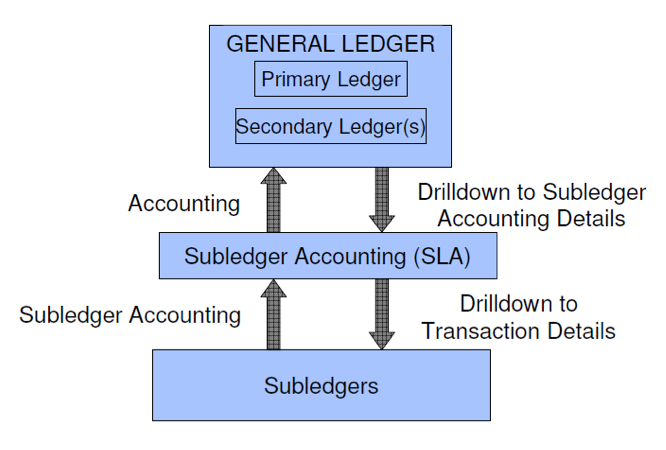Bank Reconciliation: Definition, Example, and Process

This process involves matching the amounts how to calculate ending inventory using absorption costing and dates of each transaction to ensure that they are consistent across both sets of records. Keeping accurate financial statements is the easiest way to simplify your bank reconciliation process. FreshBooks accounting software helps you track income and expenses and generate reports and financial statements. Try FreshBooks for free to streamline your tax preparation and bank reconciliations today.
Step 1: Match Each Item on the Bank Statement to the Cash Account
This way, the number of items that can cause the difference between the passbook and the cash book balance is reduced. And as a result, it gets easier to ascertain the correct balance in the balance sheet. Now, such a figure will be shown as a credit balance in your cash book, however, in the bank statement, that balance will be showcased as a debit balance and is known as the debit balance as per the passbook. The debit balance as per the cash book refers to the deposits held in the bank, and is the credit balance as per the passbook.
Step 2: Work Out the Balance as Per Bank Side of the Bank Reconciliation Statement

Conducting regular bank reconciliation helps you catch any fraud risks or financial errors before they become a larger problem. This includes everything from major fraud and theft to accounting miscalculations, insufficient funds, and incomplete or duplicated payments. Infrequent reconciliations make it difficult to address problems with fraud or errors when they first arise, as the needed information may not be readily available. Also, when transactions aren’t recorded promptly and bank fees and charges are applied, it can cause mismatches in the company’s accounting records. Using cloud accounting software, like Quickbooks, makes preparing a reconciliation statement easy. Because your bank account gets integrated with your online accounting software, all your bank transactions will get updated automatically and each item will be matched with your books of accounts.
Would you prefer to work with a financial professional remotely or in-person?
In October 2020, OpenGov, a US-based government software solution provider, introduced a new feature to automate the entire process of reconciliation. This announcement came following its acquisition of ClearRec and rebranding itself as OpenGovBank Reconciliation. This new venture offers government staff with little knowledge on bookkeeping and accounting to follow step-by-step instructions to prepare reconciliation statements. The new software is integrated ERP cloud software, a product of OpenGov itself, to ensure automation of reconciliation statement making. Automating bank reconciliation can bring numerous benefits to a business, including increased accuracy, productivity, and cost savings. By using software tools to automate bank reconciliation, businesses can focus on other critical tasks and make informed business decisions based on accurate financial data.
- Reconciling is the process of comparing the cash activity in your accounting records to the transactions in your bank statement.
- Bank reconciliation statements compare transactions from financial records with those on a bank statement.
- You need to determine the underlying reasons responsible for any mismatch between balance as per cash book and passbook before you record such changes in your books of accounts.
- Regular reconciliation and review of financial records can help identify and resolve errors promptly, reducing the risk of financial issues.
- The reconciliation process also helps you identify fraud and other unauthorized cash transactions.
As a result of these direct payments made by the bank on your behalf, the balance as per the passbook would be less than the balance as per the cash book. These debits made by the bank directly from your bank account will lead to a difference between balances. Therefore, an overdraft balance is treated as a negative figure on the bank reconciliation statement. This means that the company’s bank balance is greater than the balance reflected in the cash book. If not, you’re most likely looking at an error in your books (or a bank error, which is less likely but possible). If you suspect an error in your books, see some common bank reconciliation errors below.
All of this can be done by using online accounting software like QuickBooks, but if you are not using accounting software, you can use Excel to record these items. After adjusting all the above items what you’ll get is the adjusted balance of the cash book. However, there can be situations where your business has overdrafts at the bank, which is when a bank account goes into the negative as a result of excess withdrawals. Not-sufficient funds (NSF) refers to a situation when your bank does not honour a check, because the current account, on which the check is drawn, has insufficient funds. There will be very few bank-only transactions to be aware of, and they’re often grouped together at the bottom of your bank statement.
A bank reconciliation is used to detect any errors, catch discrepancies between the two, and provide an accurate picture of the company’s cash position that accounts for funds in transit. A bank reconciliation statement is prepared by a what do financial engineers do depositor (account holder) to overcome differences in the balances of the cash book and bank statement. Bank reconciliation statements compare transactions from financial records with those on a bank statement.
The statements give companies clear pictures of their cash flows, which can help with organizational planning and making critical business decisions. Preparing a bank reconciliation statement is done by taking into account all transactions that have occurred up until the date preceding the day the bank reconciliation statement is prepared. At times, your customers may directly deposit funds into your business’ bank account, but your business will not notified about this the bank statement is received. If you want to prepare a bank reconciliation statement using either of these approaches, you can use the balance as per the cash book or balance as per the passbook as your starting point. The deposit could have been received after the cutoff date for the monthly statement release. Depending on how you choose to receive notifications from your bank, you may receive email or text alerts for successful deposits into your account.
By comparing the two statements, Greg sees that there are $11,500 in checks for four orders of lawnmowers purchased near the end of the month. These checks are in transit, so they haven’t yet been deposited into the company’s bank account. He also finds $500 of bank service fees that hadn’t been included in his financial statement. Outstanding checks are those that have been written and recorded in the financial records leverage financial distress and profit growth of the business but have not yet cleared the bank account. This often happens when the checks are written in the last few days of the month.
Documentation also helps non-reconciliation employees cross-check data and refer back to source documents. Reconciliation reports provide a summary of the reconciliation process and help to identify any errors or discrepancies. Failing to review these reports regularly can lead to errors in the reconciliation process. Starting with an incorrect opening balance can lead to errors in the reconciliation process. It’s essential to ensure that the starting balance is accurate before beginning the reconciliation process. Errors in the cash account result in an incorrect amount being entered or an amount being omitted from the records.
